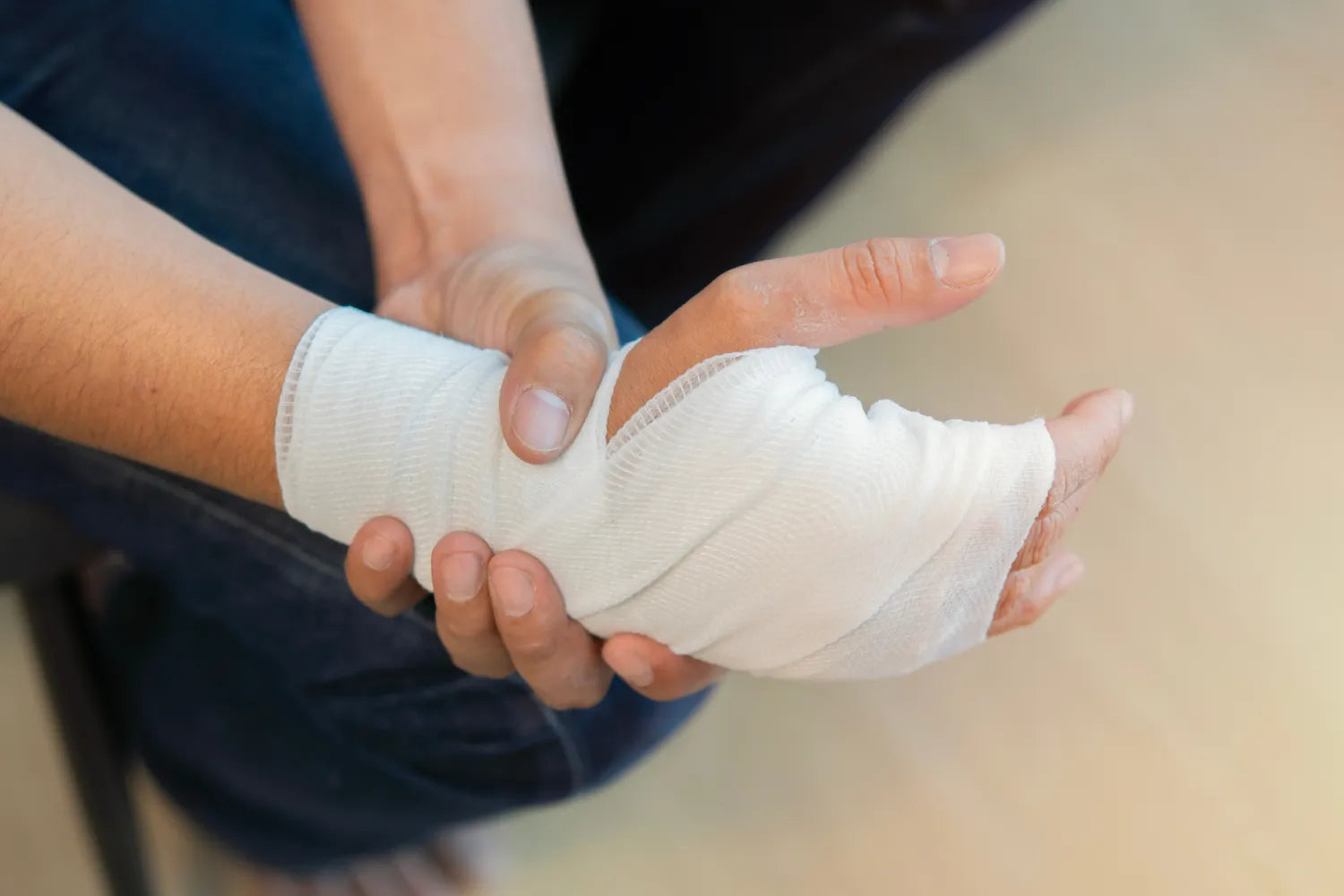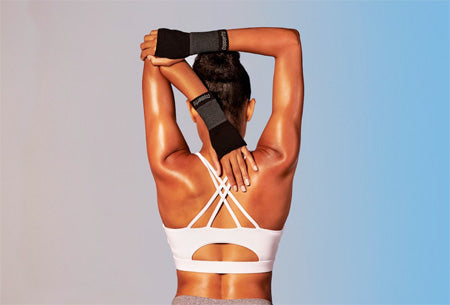
Wrist discomfort can affect anyone, whether it’s caused by repetitive motion, minor injuries, or overuse from daily tasks like typing or carrying heavy objects. These activities can lead to tension and soreness, making it challenging to stay active and perform your best. Proper care, like wrapping your wrist, is essential to help manage discomfort and support recovery.
Wrapping can stabilize the wrist, promote natural healing, and provide much-needed relief. This guide will walk you through everything you need to know about wrapping your wrist effectively, from understanding the causes of discomfort to step-by-step wrapping techniques.
What Causes Wrist Discomfort?
Wrist discomfort can stem from various everyday activities and is often a result of overuse, strain, or repetitive motion. Understanding the root cause can help you address the issue effectively.
Frequent use of keyboards, smartphones, or tools can put stress on the wrist, leading to discomfort over time. Sports activities like weightlifting or tennis often involve repetitive movements that strain the wrist. Even household chores or carrying bags can contribute to soreness or mild strain.
Mild discomfort might manifest as tension or soreness that’s noticeable during or after activity. Other symptoms could include a dull ache, tenderness, or reduced range of motion in the wrist. Paying attention to these early signs can help prevent further issues.
If discomfort persists, worsens, or is accompanied by significant swelling or numbness, it’s essential to consult a healthcare professional. This guide focuses on managing mild wrist discomfort; severe or prolonged symptoms require medical evaluation.
What Are the Benefits of Wrapping Your Wrist?
Taking the time to wrap your wrist properly offers a range of benefits that can help you manage discomfort and stay active.
Supports Natural Healing
Wrapping provides essential support to the wrist by stabilizing the area and limiting excessive movement. This helps reduce strain on muscles and tendons, allowing your body’s natural healing processes to take place more efficiently.
Stability is especially important for avoiding further irritation while performing everyday activities. With consistent use, proper wrapping can enhance the body’s ability to recover and maintain mobility.
Soothes Discomfort
By minimizing unnecessary movement, wrapping gives the wrist the rest it needs to recover. The gentle compression from the wrap helps calm tension in the area, providing noticeable relief during daily tasks.
This consistent support can make a big difference in managing discomfort, especially after repetitive strain or minor overuse. A properly wrapped wrist feels secure, allowing you to focus on your day without worrying about worsening the soreness.
Encourages Healthy Circulation
Gentle compression can support healthy blood flow, which is vital for recovery. Healthy circulation delivers oxygen and nutrients to the wrist, aiding in tissue repair and soothing soreness.
Maintaining good circulation can also help calm stiffness and support overall comfort. Wrapping the wrist ensures the right balance of support and compression to keep the area nourished and supported.
Enhances Confidence During Activity
Knowing your wrist is securely supported can provide reassurance during light tasks or exercise. Wrapping reduces the risk of aggravating the area, giving you the confidence to stay active while protecting your wrist.
Whether typing at work or engaging in recreational activities, the added stability helps you feel in control. This security encourages mindful movement, letting you enjoy your routine with peace of mind.
Supplies You’ll Need for Wrapping Your Wrist
Having the right materials on hand is essential for effective wrist wrapping.
- Elastic Bandage:A flexible option that offers adjustable compression and support.
- Athletic Tape: Provides a secure hold, especially for more active use.
- Compression Wraps:Ready-made solutions that are easy to apply and often designed for specific needs, like moisture-wicking or additional stability.
When choosing materials, consider your activity level and comfort. For long wear or physical activity, look for wraps with adjustable features or breathable fabric to maintain comfort throughout the day.
Step-by-Step Guide to Wrapping Your Wrist
Wrapping your wrist is simple when you follow these straightforward steps. Proper preparation and technique can make all the difference in managing discomfort effectively.
Preparation
Start by cleaning and drying your wrist to ensure the wrap adheres securely and doesn’t irritate your skin. Position your hand in a natural, relaxed state, with the fingers slightly spread. This ensures the wrap will provide optimal support without restricting movement.
Starting the Wrap
Begin by anchoring the bandage or tape around the palm or wrist. Make the first layer snug but not too tight to avoid cutting off circulation. This initial anchor provides a stable base for the rest of the wrap.
Building Support
Continue wrapping in overlapping layers, moving upward to cover the wrist and slightly onto the forearm. This layering provides even compression and stability. If needed, wrap around the base of the thumb for added support. Be sure to apply consistent pressure, avoiding areas that feel too tight or loose.
Securing the Wrap
Once you’ve covered the wrist and forearm, secure the wrap using tape, fasteners, or the self-adhesive end of an elastic bandage. Check that the wrap feels snug but comfortable. It should provide support without causing numbness or discoloration. Adjust as needed to ensure a proper fit.
By following these steps, you can help manage wrist discomfort and provide the stability your wrist needs to recover and perform better in your daily activities.
Dos and Don’ts of Wrist Wrapping
Using the right techniques is essential for effective wrist support. Following these simple guidelines can help ensure the wrap is beneficial and comfortable.
Dos
- Keep the wrap snug, but avoid making it overly tight. A secure fit provides stability without restricting circulation.
- Rewrap if the wrap feels loose, uncomfortable, or starts slipping. A proper fit is crucial for effective support.
- Monitor for signs of restricted circulation, such as numbness, tingling, or discoloration. If these occur, remove and rewrap the wrist with less tension.
Don’ts
- Don’t wrap over open wounds or areas of severe swelling without consulting a healthcare professional. Wrapping can aggravate sensitive areas if not done properly.
- Avoid using old or worn-out bandages. These may lack elasticity and won’t provide the support needed.
- Don’t ignore persistent discomfort. If wrapping doesn’t help or discomfort worsens, seek advice from a medical professional to address underlying issues.
Alternatives to Wrapping Your Wrist
If wrapping isn’t the right option, there are other tools and techniques available to help manage wrist discomfort and provide support.
Compression Sleeves
These pre-designed options offer consistent support and are easy to use. Look for sleeves with moisture-wicking fabrics and adjustable fits to ensure comfort during wear.
Braces
Adjustable wrist braces can provide more targeted support for individuals who need additional stabilization. They’re ideal for situations where the wrist requires a higher level of restriction.
Physical Therapy Techniques
Incorporating stretching and strengthening exercises can complement wrist support and help improve flexibility and resilience over time. Simple wrist stretches or resistance exercises can reduce tension and support recovery.
When and How Often To Wrap Your Wrist
Knowing when and how often to wrap your wrist ensures you’re using this technique effectively.
For short-term use, wrapping can be beneficial during activities that strain the wrist or after experiencing mild discomfort. Long-term use may not be necessary unless recommended by a healthcare professional.
It’s important to balance wrist support with periods of rest and gentle movement to avoid stiffness. During sleep or prolonged inactivity, consider removing the wrap to maintain proper circulation and give the wrist a chance to recover naturally.
Other Tips To Help Manage Wrist Discomfort
In addition to wrapping, there are several strategies to help ease wrist tension and support recovery.
Hot and Cold Therapy
Cold therapy can be used shortly after a strain to calm swelling or discomfort. Heat therapy, on the other hand, is beneficial for soothing tension in the wrist after the initial recovery period.
Ergonomics
Proper wrist positioning during daily activities can prevent unnecessary strain. Adjust your workstation or tools to ensure your wrists stay neutral and supported.
Stretching and Strengthening
Incorporating simple exercises into your routine can promote flexibility and build strength in the wrist. Try gentle wrist rotations or stretches to reduce tension.
Lifestyle Adjustments
Limiting repetitive motions and using ergonomic tools, such as padded grips or wrist rests, can reduce strain. Being mindful of how you use your wrist can help prevent future discomfort.
The Bottom Line
Wrapping your wrist is a straightforward and effective way to manage mild discomfort, promote recovery, and support healthy activity levels. Combined with ergonomic practices, gentle exercises, and other supportive techniques, wrapping can help you maintain wrist health and stay active.
At Copper Fit, we're committed to empowering active lifestyles that align with these methods, offering innovative solutions to help you feel better and move more comfortably every day. Taking proactive steps, like wrapping and adopting healthy habits, can keep you on track toward an active, fulfilling lifestyle.
Sources:
Wrist Pain: Causes & Treatment Options | Cleveland Clinic
Compression Therapy: Clinical and Experimental Evidence | PMC
EFFECT OF WRIST WRAP IN HANDGRIP STRENGTH IN CROSSFIT | PMC
5 Items to Make Your Work-from-Home Setup More Ergonomic | HSS





